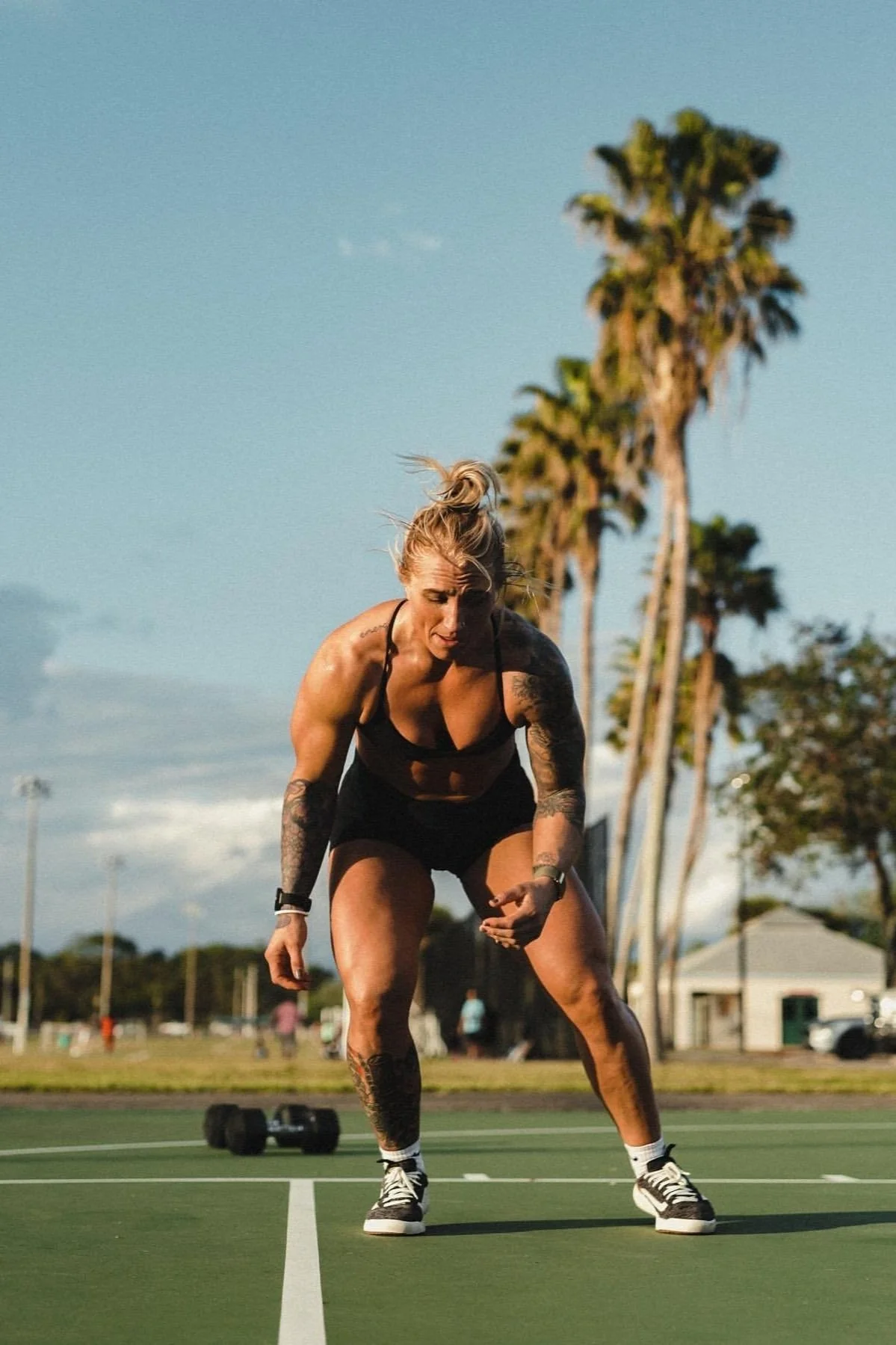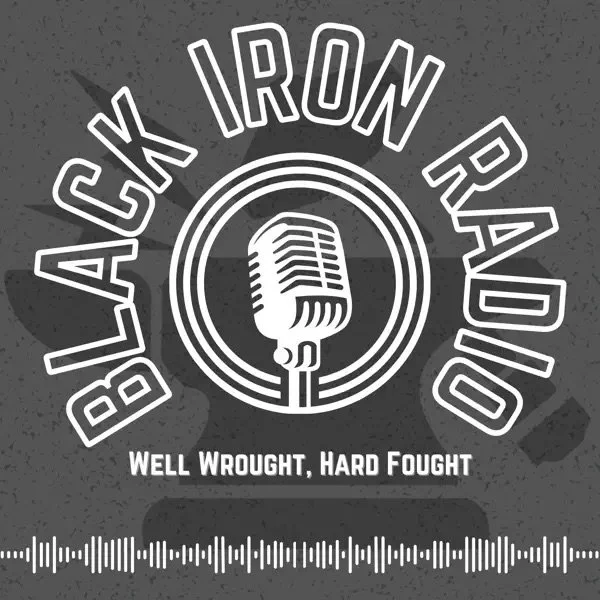Why Fitness & Athleticism Aren't a "Look"
In this blog post, we’re breaking down the biggest takeaways from our latest Black Iron Radio episode on the myth of the “athletic look.” What does it really mean to look fit—or look like an athlete? If a specific image comes to mind, you’re not alone—but it’s time to challenge that narrative. Krissy, Kelsey, and Chelsea dive into where this idea came from, how media and the fitness industry have shaped it, and why true athleticism has nothing to do with aesthetics. Whether you lift, run, ski, or climb—if you do the thing, you are the thing. Keep reading for an honest conversation on identity, body image, and redefining what it means to be an athlete.
BLACK IRON RADIO EP. 231: WHY FITNESS & ATHLETICISM AREN’T A “LOOK”
Krissy, Kelsey, and Chelsea tackle the myth that being fit or athletic means looking a certain way. They break down how this misconception takes root and how the media, social expectations, and even our own internalized beliefs have shaped what we think athletes should look like.
They discuss the wide range of physiques across different sports, the impact of training volume, nutrition, and genetics, and the disconnect between aesthetic goals and actual performance. They also get personal—sharing their own struggles with body image, sport-specific ideals, and the pressure to look the part.
Whether you lift, run, ski, or move your body in any way, this conversation is a powerful reminder that fitness is a skill, not a look—and if you’re doing the thing, you are the thing. No matter your body type.
📲 Listen & Subscribe: Apple Podcasts | Spotify
What does it mean to look fit? Or look like an athlete? If you’re nodding your head or instinctively picturing a certain body type—pause. That idea has been fed to you by years of filtered media, cherry-picked podium photos, and an industry that equates aesthetics with performance. But the truth is simple: fitness is not a look. Athleticism isn’t a body type. It’s a skill, and a lifestyle.
In this episode of Black Iron Radio, Krissy, Kelsey, and Chelsea unpack the long-standing myth that being “fit” or “athletic” means looking a certain way. They dive into how this narrative has evolved over the last two decades, especially since the rise of CrossFit and the phrase “fittest on Earth” became synonymous with a lean, muscular physique.
“I just want to look like I work out…”
That’s the most common phrase Krissy hears on discovery calls. And what does that even mean? When someone says they want to “look fit,” they’re often picturing a very specific kind of athlete—usually a CrossFitter or a lean runner—because that’s what the internet shows them. But if you lined up Olympic gold medalists from every sport side-by-side, you'd see radically different body types. From powerlifters to swimmers to ultra runners, elite athletes look like everything.
Skill Over Aesthetic
A big part of this episode is encouraging a mindset shift: If you're doing the thing, you're the thing. If you run, you’re a runner. If you lift, you’re a lifter. If you ski, you’re a skier. Your performance, your effort, and your consistency—not your abs—are what define you as an athlete.
Kelsey opens up about her own journey as a CrossFit athlete, reflecting on the pressures to shrink her body and how that impacted her performance and health. Chelsea echoes that, sharing how often people comment on her body when she tells them she’s an ultra runner—usually with a confused “You don’t look like a runner.”
It’s a cycle that needs breaking. And it starts with the stories we tell ourselves.
Reality Check: Elite Physiques Take Elite-Level Effort
Here’s the other part people forget: many of those “ideal” bodies come from years—sometimes decades—of focused training, eating with intention, and making sacrifices that most folks just aren’t interested in. That doesn’t make your goals less valid, but it should make you think twice before comparing yourself to someone who trains 6+ hours a day, tracks every gram of food, and treats their sport like a full-time job.
Want to look like Kelsey during her peak CrossFit days? Cool—but also know she was all in. And that level of dedication isn’t for everyone.
The Media Problem (Yes, It’s Still a Problem)
Let’s be honest: women in fitness are still heavily sexualized and filtered through the lens of what society thinks is “sellable.” The athletes who get the most exposure, the most brand deals, the most camera time? More often than not, they check boxes for conventional beauty standards—not just performance.
So if you’re constantly seeing a narrow version of what “fit” looks like, it’s not your fault. But it is your responsibility to challenge it.
So What Do You Actually Want?
The hosts challenge listeners to go deeper. When you say “I want to look more athletic,” ask yourself: do I mean leaner? Stronger? More muscular? Am I chasing a look… or a feeling? Is this about me—or someone else’s approval?
Body composition goals are valid. Changing your body on purpose is valid. But it’s crucial to unpack the why behind those goals. Make sure it’s rooted in self-respect, not self-hate.
Final Thoughts: You Are the Thing
You don’t have to look like the top 1% in your sport to belong. You don’t have to earn your title through aesthetics. If you do the thing, you are the thing. Period.
Let go of the idea that you have to fit a mold to be worthy of your sport—or your goals. There is no “athletic look.” There is only your look, your effort, and your story.
Want help fueling your sport (regardless of your body type)?
Book a free discovery call with a Black Iron Nutrition coach. We’re here for real goals, real performance, and helping you show up fully—just as you are.
🎙️ WANT MORE? SUBSCRIBE TO BLACK IRON RADIO!
If you enjoyed this conversation, check out more episodes of Black Iron Radio, where we cut through the noise and give you real, no-BS advice on feeling, performing, and looking your best. Each week we share practical nutrition, training, and wellness strategies and tips to help you succeed.
📲 Listen & Subscribe: Apple Podcasts | Spotify


